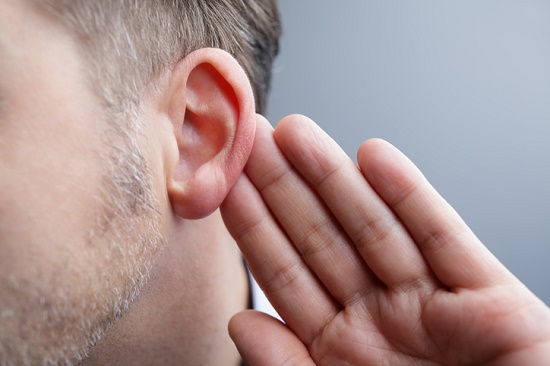
Your chances of acquiring hearing loss at some point in your life are unfortunately quite high, even more so as you grow older. In the US, 48 million individuals report some level of hearing loss, including just about two-thirds of adults age 70 and older.
That’s the reason it’s important to understand hearing loss, so that you can identify the signs and symptoms and take preventative actions to avoid injury to your hearing. In this blog post, we’re going to zero in on the most widespread form of hearing loss: sensorineural hearing loss.
The three forms of hearing loss
In general, there are three types of hearing loss:
- Conductive hearing loss
- Sensorineural hearing loss
- Mixed hearing loss (a combination of sensorineural and conductive)
Conductive hearing loss is less common and results from some form of obstruction in the outer or middle ear. Frequent causes of conductive hearing loss include impacted earwax, ear infections, benign tumors, perforated eardrums, and hereditary malformations of the ear.
However, sensorineural hearing loss is far more common.
Sensorineural hearing loss
This form of hearing loss is the most prevalent and makes up about 90 percent of all documented hearing loss. It is the result of damage to the hair cells (the nerves of hearing) of the inner ear or to the nerves running from the inner ear to the brain.
With sensorineural hearing loss, sound waves enter the external ear, strike the eardrum, and reach the inner ear (the cochlea and hair cells) as normal. However, on account of destruction to the hair cells (the very small nerve cells of hearing), the sound signal that is delivered to the brain for processing is diminished.
This weakened signal is perceived as faint or muffled and usually has an effect on speech more than other kinds of lower-pitched sounds. Also, in contrast to conductive hearing loss, sensorineural hearing loss tends to be permanent and can’t be remedied with medicine or surgery.
Causes and symptoms
Sensorineural hearing loss has several possible causes, including:
- Genetic disorders
- Family history of hearing loss
- Meniere’s Disease or other disorders
- Head trauma
- Benign tumors
- Exposure to loud noise
- Aging (presbycusis)
The final two, exposure to loud noise and aging, account for the most widespread causes of sensorineural hearing loss, which is honestly great news as it means that most cases of hearing loss can be avoided (you can’t avoid aging, obviously, but you can limit the collective exposure to sound over your lifetime).
To fully grasp the symptoms of sensorineural hearing loss, you should always remember that damage to the nerve cells of hearing usually develops very gradually. Consequently, the symptoms advance so slowly that it can be near impossible to detect.
A small amount of hearing loss every year will not be very recognizable to you, but after several years it will be very apparent to your friends and family. So although you may think that everybody is mumbling, it may be that your hearing loss is catching up to you.
Here are a few of the signs and symptoms to watch for:
- Trouble understanding speech
- Difficulty following conversions, especially with more than one person
- Turning up the TV and radio volume to elevated levels
- Frequently asking other people to repeat themselves
- Perceiving muffled sounds or ringing in the ears (tinnitus)
- Feeling exceedingly tired at the end of the day
If you recognize any of these symptoms, or have had people inform you that you might have hearing loss, it’s best to arrange for a hearing exam. Hearing tests are quick and pain-free, and the sooner you treat hearing loss the more hearing you’ll be able to retain.
Prevention and treatment
Sensorineural hearing loss is mostly preventable, which is great news since it is by far the most common type of hearing loss. Millions of instances of hearing loss in the United States could be eliminated by adopting some simple protective measures.
Any sound higher than 80 decibels (the volume of city traffic inside your car) can potentially harm your hearing with extended exposure.
As the decibel level increases, the amount of time of safe exposure decreases. As a result, at 100 decibels (the volume of a rock concert), any exposure over 15 minutes could impair your hearing.
Here are some tips on how you can protect against hearing loss:
- Implement the 60/60 rule – when listening to a portable music player through headphones, listen for no more than 60 minutes at no more than 60 percent of the maximum volume. Additionally, think about investing in noise-canceling headphones, as these will require lower volumes.
- Safeguard your ears at concerts – rock concerts can range from 100-120 decibels, far above the ceiling of safe volume (you could injure your hearing within 15 minutes). Minimize the volume with the aid of foam earplugs or with musician’s plugs that preserve the quality of the music.
- Protect your ears at work – if you work in a high-volume occupation, talk to your employer about its hearing protection program.
- Safeguard your hearing at home – Several household and leisure activities generate high-decibel sounds, including power saws, motorcycles, and firework displays. Make sure that you always use ear protection during prolonged exposure.
If you currently have hearing loss, all is not lost. Hearing aids, while not able to completely restore your hearing, can substantially improve your life. Hearing aids can improve your conversations and relationships and can prevent any additional consequences of hearing loss.
If you think that you might have sensorineural hearing loss, schedule your quick and simple hearing test today!